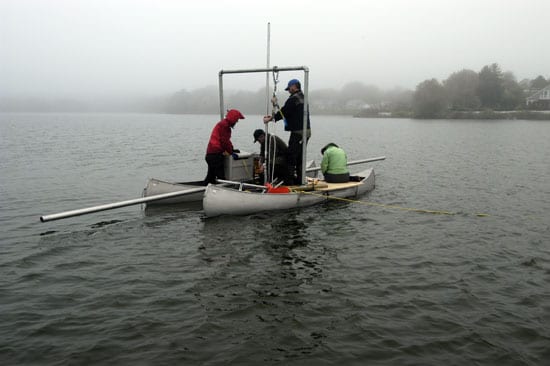Climate Change in the Bottom of a Lake
March 20, 2007
Climate is often discussed in global terms, but it is the regional and local effects that will matter most to everyday people. WHOI geologist Jeff Donnelly and colleagues are looking closely at the regional effects of a past period of climate change, and it’s not all about rising temperatures. Between 5,400 and 3,000 years ago, the distribution and circulation of fresh water in New England fundamentally changed. Droughts persisted for hundreds of years; tree, plant, animal, and insect populations changed; and water levels in lakes dropped from Cape Cod to New York. The research group led by Donnelly has been working to reconstruct water-level histories to see what the rise and fall of these inland waters can tell us about regional climate in the past. Using ground-penetrating radar and traditional coring techniques, the researchers are examining sedimentary patterns within small lakes and ponds to track shifts in moisture over time. Such reconstructions may offer essential clues for understanding the causes and potential impacts of future climate change in the region.

